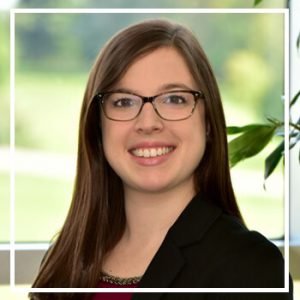 Concordia Pharmacy Faculty
Concordia Pharmacy Faculty What do pharmacy professors do during the summer?
What do pharmacy professors do during the summer? Three professors give insight into their summer work.
Pharmacy classes are demanding during the school year, for both students and faculty. The summer months allow some time for rest and reset before classes start. Hear from a few pharmacy professors about their summer projects.

Faculty Member Robert Mueller, PharmD, BCPS: Leads a Spanish immersion program.
What summer project are you working on?
For the last five years, I have led a seminar for a Spanish immersion summer program.
How did you get involved in this program?
I received a grant from CVS in 2018 to develop and deliver a Medical Spanish Seminar. This seminar is for pharmacy interns enrolled in the CVS Spanish Immersion Summer Internship program.
I developed this particular seminar to focus on one main goal:
To build knowledge and skills needed to provide linguistically and culturally appropriate care to Spanish-speaking patients.
This seminar is in demand.
The CVS Spanish Immersion Summer Internship program has grown over the years. The virtual, live seminar is offered one day per year, at the start of the summer internship. This allows them to have the whole summer to apply and build on the content we covered in the seminar. This year, there were about 75 interns with more than 60 of them participating in the seminar.
What do you cover in this seminar?
I focus on discussing verbal communication strategies, reviewing key phrases, and concepts for patient education. It’s crucial to use appropriate and patient-friendly language. So, we also spend a lot of time practicing how to translate prescription instructions into Spanish.
Here are my seminar’s presentation objectives:
-
- Review Spanish pronunciation
- Outline key phrases for building a patient-pharmacist relationship in Spanish
- Discuss Spanish communication strategies
- Practice translating prescription directions
- Review the process for asking questions in Spanish
- Outline key questions for intake and prescription pickup
- Review key phrases for patient education in Spanish
- Discuss tips relevant to caring for various Spanish-speaking patients
- List other resources for using Spanish in pharmacy practice
What impact do you hope this provides for student learning?
My goal for this seminar is to increase the students’ Spanish skills around language related to medications. Students will also gain a better understanding of cultural factors that can impact patient care. As a result, I hope to empower students while serving their patients in a way that is culturally, linguistically sensitive, and appropriate.
____________________________________________________________________
Faculty member Beth Buckley, PharmD, CDE: Professionally trains’ in mindfulness and yoga.

What summer project are you working on?
I wanted to enhance my personal practice in mindfulness. Last summer I completed an 8-week Mindfulness-Based-Stress-Reduction certification course.
This summer, I am taking on a 200-hour Yoga Teacher Training program. It’s the next step to furthering my personal practice and skills in mindfulness.
How will you use your training in your classes at Concordia?
That’s a good question. I’m thinking of two main aspects: role modeling, and offering practice opportunities to all. I love the outlook of living well. I feel that it matches my own spirituality and behaviors as a Christian woman. Learning more has given me a better idea of how to role model these values for our students.
The CALM (Centering and Living Mindfully) initiatives over the last year were successful. I have data to support how mindful movement can:
- increase resilience, coping, and well-being
- decrease depression, anxiety, and stress
Giving students access to mindfulness tools
I want to be able to give our students more access to mindfulness and mindful practice. However, it can be difficult to come up with continued funding to support the certified instructor. I looked into becoming a certified instructor because I have practiced yoga and meditation for many years. This would allow me to have the skills to effectively offer this to our students.
What is mindfulness practice as it relates to your students?
In the Spring and Fall of 2020, we were able to offer our students a way to practice mindfulness. There was a weekly session of mindful movement, meditation, and reflection. With that and my current fusion of teaching mindfulness, I have seen how these activities can positively impact the lives of our students.
How will you implement mindfulness education?
The loose plan is to start small, with some kind of noon practice. Students, faculty, and staff will be invited to join me in practice to support their mind, body, and spirit. It will include some kind of grounding, connecting, and finding an awareness of how our movement can help us to connect. We hope to enhance our well-being and decrease stress.
____________________________________________________________________

Faculty member Fran Napolitano, PharmD, MEd: Welcomed APPE students and presented on care management.
What summer project are you working on?
Sarah Ray and I really enjoyed welcoming our first Advanced Pharmacy Practice Experience (APPE) student and the Pharmacy Practice and Academic Leadership resident at our practice site, Progressive Community Health Centers (PCHC)!
Our rotation counts as a required Ambulatory Care APPE for P4 students. It focuses on diabetes management of urban-underserved patients at a Federally Qualified Health Center. Students gain skills in handling medication, medication reviews, diabetes and smoking education, support groups, and more! This is the first year we are precepting APPE students and our residents at PCHC.
What was it like to welcome those learners there over the summer?
It’s refreshing to see the passion that learners have for our patients and the field of pharmacy. As a faculty member who mostly teaches in the first year, it’s incredible to see how the students have grown during their P2 and P3 years. Then I can see their continued growth during the 6 weeks of their APPE rotation as a P4.
Having students at the clinic enhances their patient care, communication, and empathy skills. Most importantly, the location and demographics of our patients provide students with important experiences of how social and environmental factors affect health. Students also provide a fresh clinical perspective that can make a great impact on our patients and providers.
You also co-developed a program about care management. Tell us more!
Another summer project was co-presenting at a meeting for Wisconsin Primary Health Care Association. We covered the success of Care Management at PCHC, a program I co-developed with my colleague Pang Vang, RN. The Care Management program was developed about 2 years ago for patients who are “High Utilizers” of health care. We worked with our Chief Medical Officer, Behavioral Health Consultants, and Social Worker on the program. So it really has been a great example of team-based care.
What does this program do?
- Strengthen the coordination of care
- Eliminate duplication
- Reduce the need for expensive medical services
- Increase patient and caregiver engagement and confidence in managing medical, social, and mental health
In addition, we discuss topics such as:
- Social determinants of health
- Health gaps in Milwaukee
- Handling medication cost and access issues
Teamwork is essential.
As the Care Manager, Pang reviews patients at our clinic who have complex health conditions. These patients may have multiple hospitalizations or emergency room visits each year. Once enrolled, Pang helps patients navigate their health and connect them to resources.
My role is to use their medications to control health conditions, educate them on the importance of medication adherence, and help with the cost or access issues. Since these patients have highly complicated health and often social problems, it is a challenging but highly fulfilling job.
The role of the pharmacist is changing. Pharmacists are much more involved in primary care. Does your work speak to this?
Yes! Our teamwork within the program and the results of a patient case were well received by the Wisconsin Primary Health Care Association. As a result, it sparked great conversations about the role of pharmacists in primary care. Other organizations at the meeting were impressed with the work I have achieved as a pharmacist. Since then, they have inquired about how to utilize a clinical pharmacist in primary care. Presentations and connections like this are incredibly important to help demonstrate the usefulness of pharmacists on care teams. Finally, this is a great avenue to pursue the development of additional ambulatory care pharmacist positions across the state!
__________________________________________
You can read pharmacy faculty bios here.
—
If this story has inspired you, why not explore how you can help further Concordia's mission through giving.